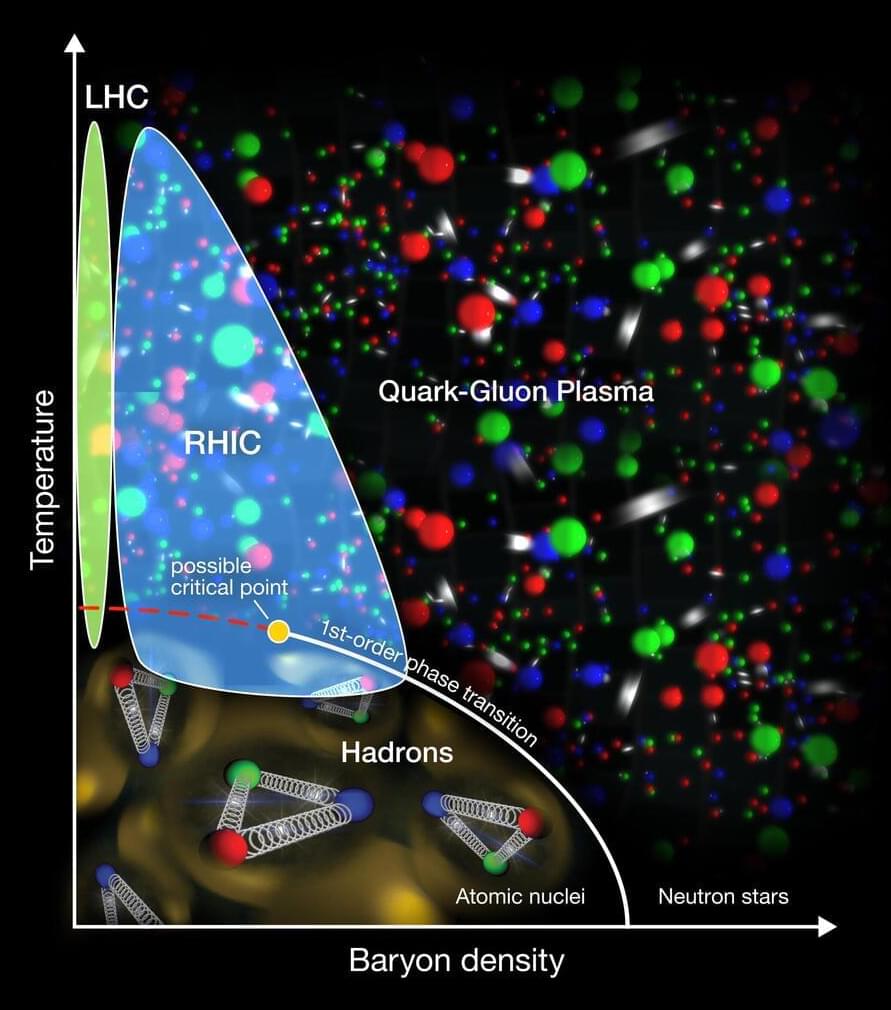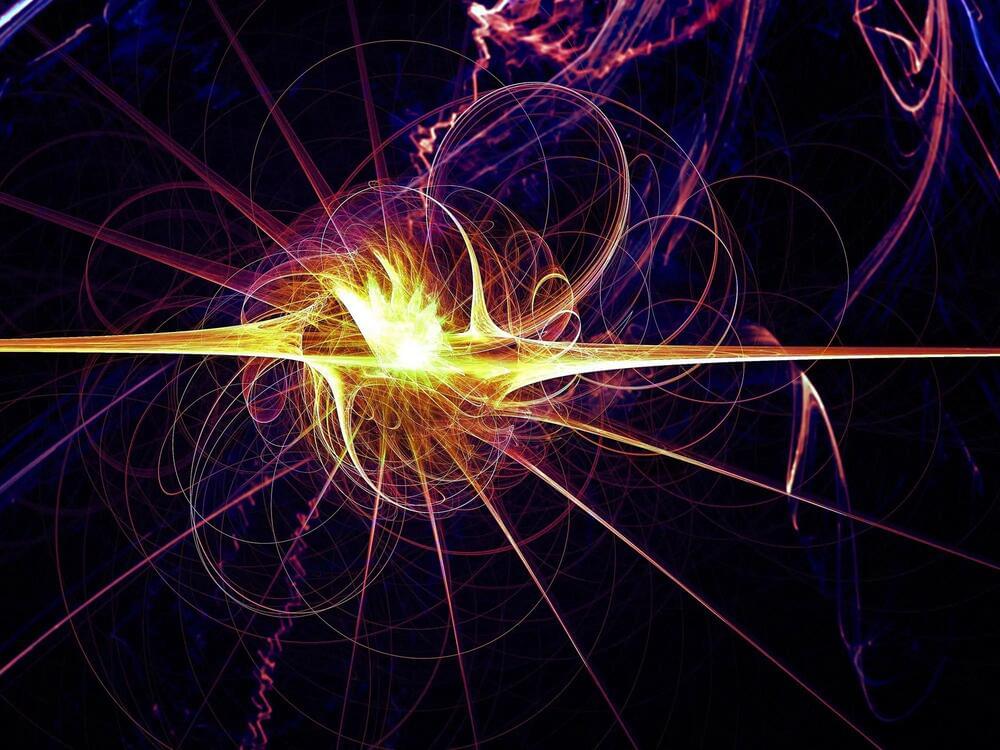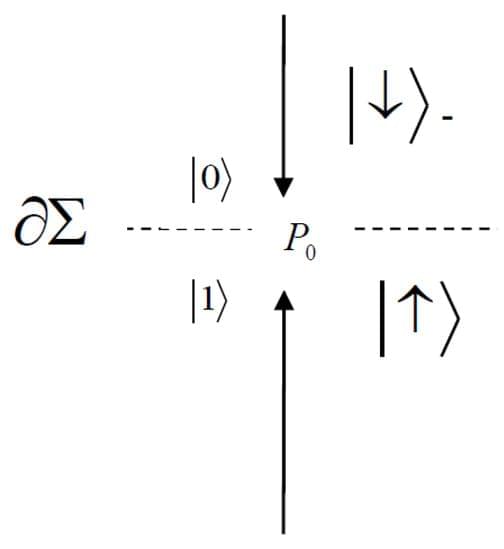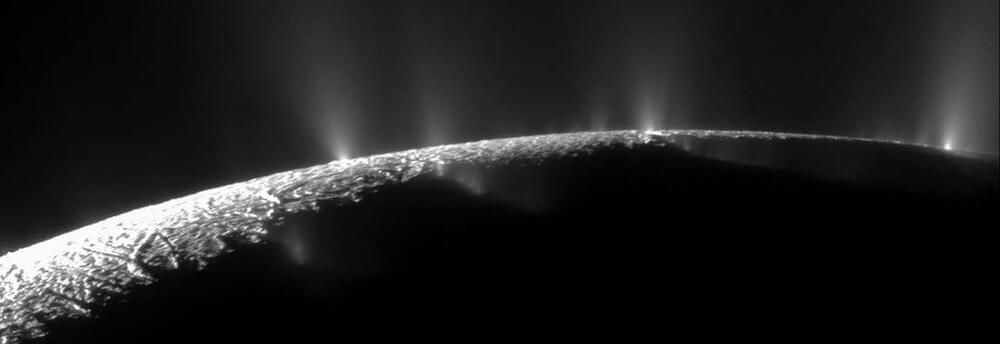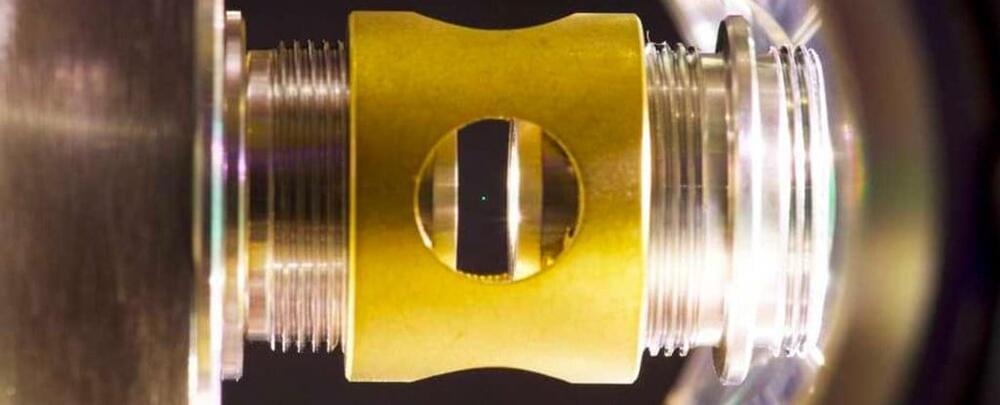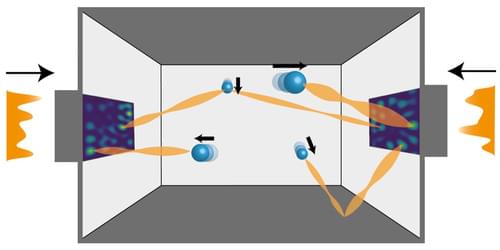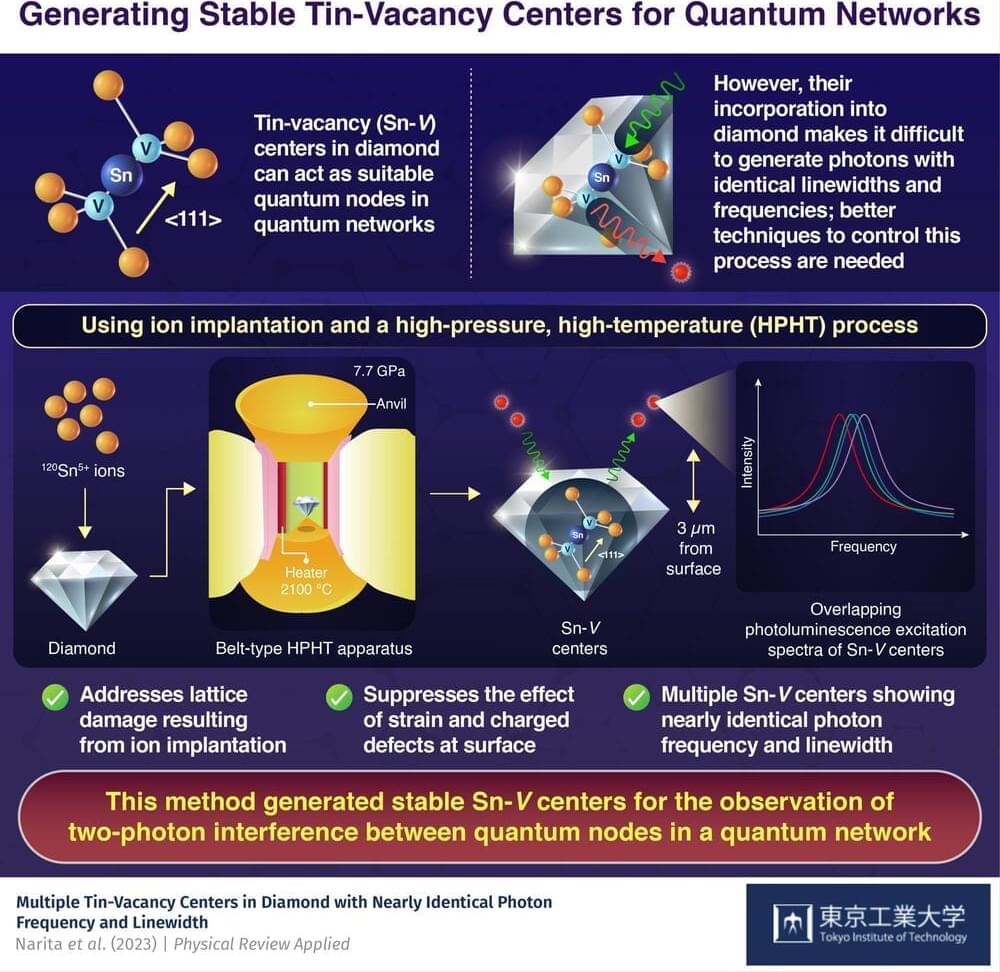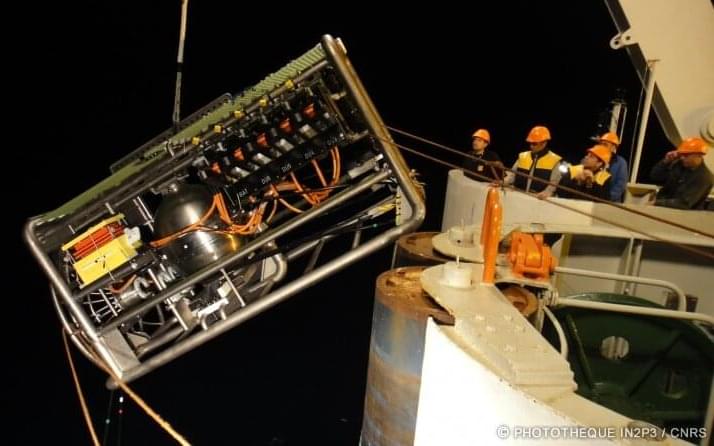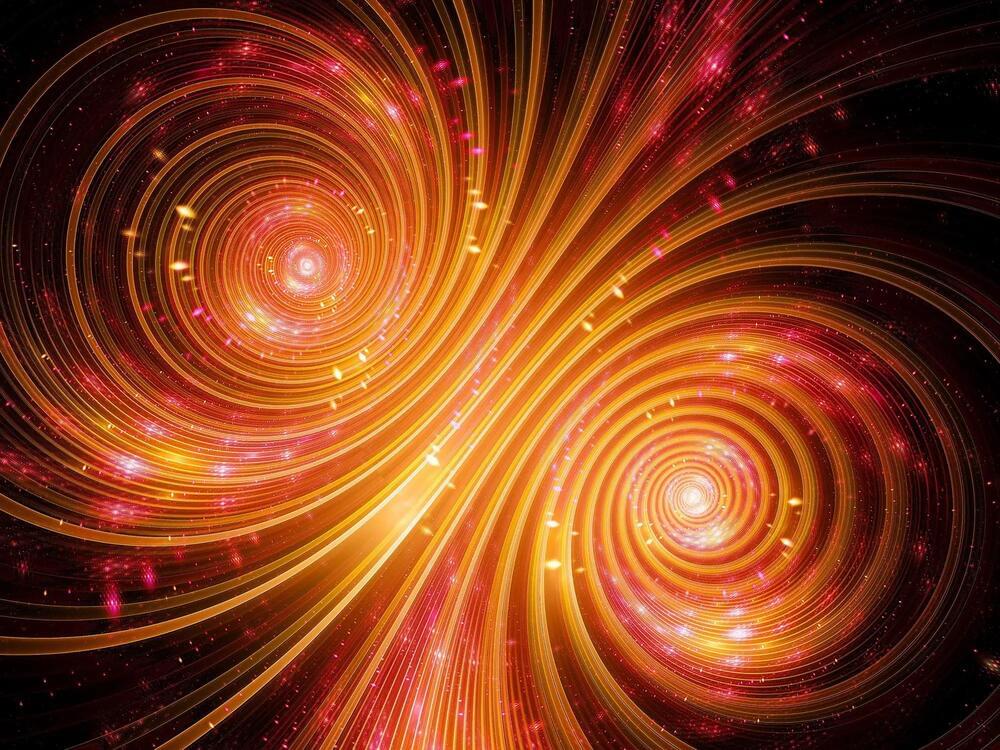Feb 27, 2023
Recognizing a clear sign that quark-gluon plasma production ‘turns off’ at low energy
Posted by Saúl Morales Rodriguéz in categories: nuclear energy, particle physics
Physicists report new evidence that production of an exotic state of matter in collisions of gold nuclei at the Relativistic Heavy Ion Collider (RHIC)—an atom-smasher at the U.S. Department of Energy’s (DOE) Brookhaven National Laboratory—can be “turned off” by lowering the collision energy. The “off” signal shows up as a sign change—from negative to positive—in data that describe “higher order” characteristics of the distribution of protons produced in these collisions.
The findings, just published by RHIC’s STAR Collaboration in Physical Review Letters, will help physicists map out the conditions of temperature and density under which the exotic matter, known as a quark-gluon plasma (QGP), can exist and identify key features of the phases of nuclear matter.
Generating and studying QGP has been a central goal of research at RHIC. Since the collider began operating in 2000, a wide range of measurements have shown that the most energetic smashups of atomic nuclei—at 200 billion electron volts (GeV)— melt the boundaries of protons and neutrons to set free, for a fleeting instant, the quarks and gluons that make up ordinary nuclear particles.
